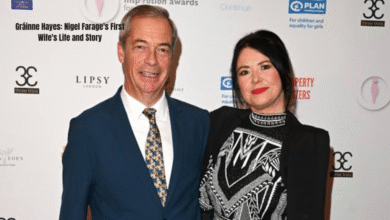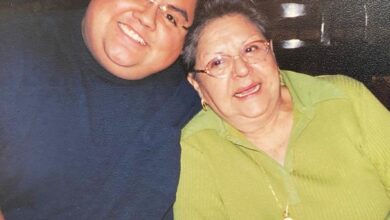Lamine Yamal Parents: The Family Roots Behind Spain’s Youngest Football Star

Introduction
In the world of football, few names have risen as quickly and dramatically as Lamine Yamal parents. At just a teenager, he has already left an indelible mark on both the national and club scenes, dazzling fans with his extraordinary talent and mature gameplay. But behind every rising star lies a story rooted in family, sacrifice, and background—and Lamine Yamal parents is no exception.
While most fans are captivated by his footwork and game intelligence on the pitch, there’s a growing curiosity about the people who shaped him into the player he is today—his parents. Understanding the roots of this football prodigy means exploring the story of his mother and father, their heritage, and the values they passed on to their son.
In this article, we take a deep dive into the lives of Lamine Yamal parents—revealing how their multicultural background, resilience, and support played a pivotal role in nurturing one of Spain’s most promising young footballers. From their Moroccan and Equatoguinean heritage to their private lifestyle amid growing public interest, this is a story of family, faith, and football.
Who Are Lamine Yamal parents’s Parents?
Lamine Yamal parents was born in Esplugues de Llobregat, a municipality in the province of Barcelona, Spain. His family’s influence is deeply embedded in his rise to stardom, even though his parents prefer to keep their lives private and away from the glaring media spotlight. Lamine’s father is of Moroccan descent, while his mother hails from Equatorial Guinea, giving him a rich and diverse cultural lineage.
While the exact names of his parents have not been extensively revealed to the public, what is known is their unwavering support for their son’s passion for football. From his earliest years, they were instrumental in creating a nurturing environment where Lamine could flourish not just as an athlete, but as an individual with strong values and a global perspective.
Their guidance helped shape Lamine’s early experiences. His parents reportedly enrolled him in FC Barcelona’s famed La Masia academy at a young age, recognizing his extraordinary talent early on. Instead of pushing him into the spotlight prematurely, they focused on allowing him to grow steadily, surrounded by values of humility, dedication, and education.
The Yamal family currently resides in Barcelona, balancing their son’s professional success with a strong sense of familial unity. Their low-profile lifestyle serves as a buffer for Lamine, allowing him to concentrate on his career while staying grounded in the roots that matter most—his home and heritage.
Ethnic and National Background of Lamine Yamal parents’s Parents
Lamine Yamal parents’s parents come from two distinct yet culturally rich regions—Morocco and Equatorial Guinea. His father, a Moroccan by birth, carries the deep traditions of North African culture. Morocco, with its blend of Berber, Arab, and Islamic traditions, has a long history of football enthusiasm, which might have naturally influenced his father’s appreciation for the sport. Moroccan values like family cohesion, discipline, and respect for elders are foundational, and they have undoubtedly played a role in Lamine’s upbringing.
On the other hand, Lamine’s mother originates from Equatorial Guinea, a small but vibrant country located in Central Africa. The nation is known for its strong community ties, love for sports, and linguistic diversity. Spanish is one of its official languages, which likely helped bridge cultural understanding in their household. Equatorial Guinean culture places high value on perseverance and pride in identity—traits that are easily noticeable in Lamine’s calm yet confident demeanor on the pitch.
This unique blend of African heritage mixed with a Spanish upbringing offers Lamine Yamal parents a multicultural identity that reflects the modern face of Europe. It also gives him an edge, not only in understanding different cultures but in representing a new generation of athletes who come from diverse backgrounds yet unite through the universal language of sport.
Their combined heritage gives Lamine a rooted identity. His playing style—creative, resilient, and unpredictable—could be seen as a reflection of the fusion between Moroccan flair and Central African strength. More importantly, it underlines how football transcends borders and becomes a symbol of unity, especially in multicultural families like the Yamals.
The Role of His Parents in His Football Journey
The influence of Lamine Yamal parents’s parents on his football journey cannot be overstated. From the beginning, they were the first to recognize his rare potential and the importance of cultivating it responsibly. They weren’t merely spectators; they were active participants in his path to greatness. They made sacrifices—emotional, financial, and personal—to ensure that their son had every opportunity to pursue his dream.
According to sources close to the family, Lamine’s father would often accompany him to training sessions, offering moral support while remaining in the background. His mother, equally supportive, played a key role in maintaining balance in his life—making sure he excelled in school while nurturing his personal development. It’s this holistic support system that allowed Lamine to thrive not just as an athlete, but as a balanced individual.
The decision to enroll him in La Masia, Barcelona’s elite football academy, was a turning point. The prestigious institution is known for producing legends like Lionel Messi, Xavi, and Iniesta. But enrolling in La Masia comes with its own pressures—high expectations, competitive environments, and immense media scrutiny. Lamine’s parents ensured he remained focused and level-headed, instilling humility and work ethic over arrogance and entitlement.
In interviews, coaches have described Lamine as a respectful and coachable player—traits that often reflect good parenting. His ability to handle fame and attention at such a young age suggests that his family prioritized values over vanity. Their presence has given him the emotional armor to deal with challenges and the mental clarity to keep growing.
Life Away from the Spotlight: Privacy and Media Attention
Despite their son’s growing fame, Lamine Yamal parents’s parents have consciously chosen to stay away from the public eye. In an age where social media often dominates narratives, their decision to maintain privacy speaks volumes about their approach to fame and parenting. They understand the pressures that come with being in the limelight, especially for a child, and work diligently to shield him from the invasive gaze of the media.
Their choice to remain private is not just a lifestyle preference—it’s a protective strategy. While fans and the press clamor for details about Lamine’s personal life, his parents have managed to keep most of that world untouched. There are few, if any, public photos or interviews featuring them. They rarely, if ever, attend games in a high-profile manner. Instead, they let their son’s performance on the field do the talking.
In doing so, they’ve created a safe haven where Lamine can return after the applause fades—an environment that doesn’t revolve around fame but around family, tradition, and normalcy. This balance is critical for young athletes whose identities are still forming. Too much attention too soon can derail even the most promising talents, but the Yamals have tactfully ensured that Lamine remains humble and grounded.
Their silent strength offers a lesson in modern parenting: not every success story requires a public stage. Sometimes, the greatest contributions are made quietly, behind closed doors, and away from the flash of cameras.
The Cultural Impact: Representing More Than One Heritage
Lamine Yamal parents isn’t just a football player; he is a cultural symbol. As a young athlete of both Moroccan and Equatoguinean descent playing for Spain, he represents a rich tapestry of identity that resonates with millions of young fans across Europe and Africa. His background reflects the increasingly diverse face of modern football and challenges outdated notions of nationality and ethnicity.
In Spain, where immigration and multiculturalism continue to spark political and social conversations, Lamine stands as a positive example of integration and contribution. He’s living proof that heritage doesn’t have to be singular and that identity can be layered, inclusive, and powerful. Through his success, he brings visibility to underrepresented communities and inspires children of immigrant backgrounds to dream big.
His story also resonates deeply in Morocco and Equatorial Guinea. Many fans in both countries proudly claim him as their own, celebrating his success as a shared cultural victory. Lamine’s dual heritage enables him to act as a bridge between nations, promoting unity through sport. Whether he’s speaking Spanish, influenced by his African roots, or wearing the Spanish national jersey, he represents a blend of worlds coming together.
Culturally, Lamine Yamal parents’s rise is a reminder that greatness knows no borders. In every sprint, pass, and goal, he carries not just the hopes of a team but the pride of communities from multiple continents. His parents’ decision to instill pride in his roots has allowed him to walk confidently in many worlds—and that confidence shows in every match he plays.
Conclusion
The story of Lamine Yamal parents is not just about natural talent and football glory—it’s about family, sacrifice, and cultural pride. His parents, through their unwavering support, deep cultural values, and commitment to privacy, have laid the foundation for their son’s remarkable journey. From humble beginnings in a multicultural household to the bright lights of international stadiums, Lamine’s rise is a testament to what grounded parenting can achieve.
By remaining in the background, his mother and father have allowed Lamine to shine while never losing touch with who he is and where he comes from. Their influence is present in his work ethic, humility, and the way he gracefully handles fame at such a young age.
As Lamine Yamal parents continues to carve out a legendary path in football, his parents’ story will remain a quiet but powerful part of that legacy. And for fans who want to understand what fuels such brilliance, they need only look back at the roots—because that’s where greatness truly begins.
Also Read: toothpaste luxury




